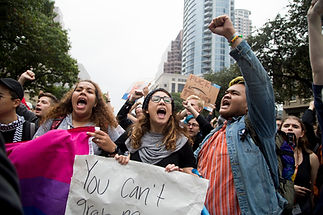Department of Rhetoric & Writing
University of Texas at Austin

Rhetoric of Allyship
In 2017, Kendall Jenner, on behalf of PepsiCo, handed a cop a soda to end police violence against black folks. More recently, white women began to center the imagery and language of The Handmaid’s Tale, a fictional dystopia about the systemic rape and reproductive enslavement of white women, to protest a new Texas law which banned abortion after six weeks, then they took to social media platforms like TikTok to question why women of color were allegedly not “stepping up” to support their cause. These public rhetorical failures of allyship beg the question: What exactly does it mean to be a “true” ally? What values, beliefs, and practices animate this word and the relationship it demands? Why do calls for alliance go unheard? Or attempts at performing allyship fall short? How can we, individually and collectively, become stronger allies to, or more accurately, with others?
This class will begin the work of exploring the rhetoric(s) of the "allyship" with these governing questions in mind. Together, we will analyze and produce allyship rhetoric to broaden our critical reading and thinking skills. Students will become versed in feminist of color critiques, theories, and practices of alliance building. Perhaps more importantly, students will practice writing as a site from which to enact the work of alliance.
Course Objectives
-
Develop and practice critical reading and thinking skills
-
Evaluate and analyze the effectiveness of rhetorical strategies within alliance building and maintenance
-
Develop active, collaborative, and process-driven writing practices
-
Gain confidence as writers in both academic and public contexts
-
Develop an understanding of feminist of color thought and criticism surrounding alliance building, maintenance, disruption, and failure